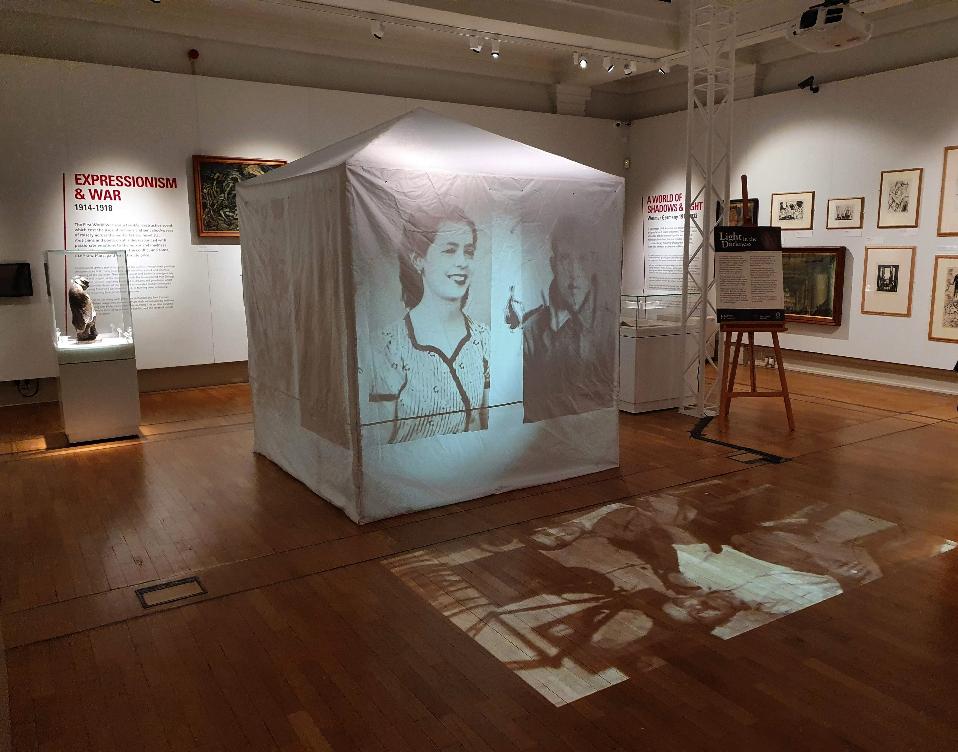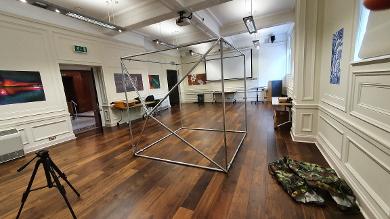THE LIGHT IN THE DARKNESS June 2021
Details of the project and the process on my blog: https://georgesfougaras.blogspot.com/2020/12/light-in-dark-installations.html?view=mosaic
Click on the image below or scroll down for a video clip of the installations of the two tents, at Leicester Museum and the Great Meeting Unitarian Church.

The installation Light in the Darkness was created as a response to the fragments of the triptych 'Thou Shalt Not Kill' by Johannes Matthaeus Koelz, part of Leicester Museums & Galleries internationally acclaimed German Expressionism collection. It links the plight of refugees, past and present, to the horror and destruction of war. Two versions were created one for the Museum and one for the Unitarian Church.
The Koelz triptych, which had to be cut up and hidden from the Nazi regime and smuggled out of Germany in 1937, exposes the futility, hypocrisy and violence of armed conflict. These fragments were donated to Leicester by Koelz’s daughter in 1998.
Hope and remembrance
‘Light in the Darkness’ symbolises the fragility of life and the power of hope and remembrance. Both tents (one exhibited at Leicester Museum & Art Gallery and the other touring various venues including the Leicester Unitarian Chapel) represent the common need for shelter by all exiled and displaced people and the responsibility to remember those lost.
The photographs show displaced people, many of whom who lost their lives. Amongst the loved ones shown are African, Jewish, Armenian and Greek people from Turkey, the latter being members of the artist’s own family.
The photographs appear and fade as a searchlight casts them into sharp relief against the flimsy tent fabric. The revolving light records and exposes the sadness of the past, but also illuminates the way to a better, more just tomorrow.
The soundscape replays voices as echoes from the past, and the tents are the very same as those used by the United Nations in refugee camps across the globe, made specifically for this installation. Following this installation, they will be used as intended, donated to a refugee charity to be used as shelters.
The tents stand as symbols, monuments to lost homes and lives. They reaffirm our commitment to justice for the persecuted and the displaced.
Translate This Page

